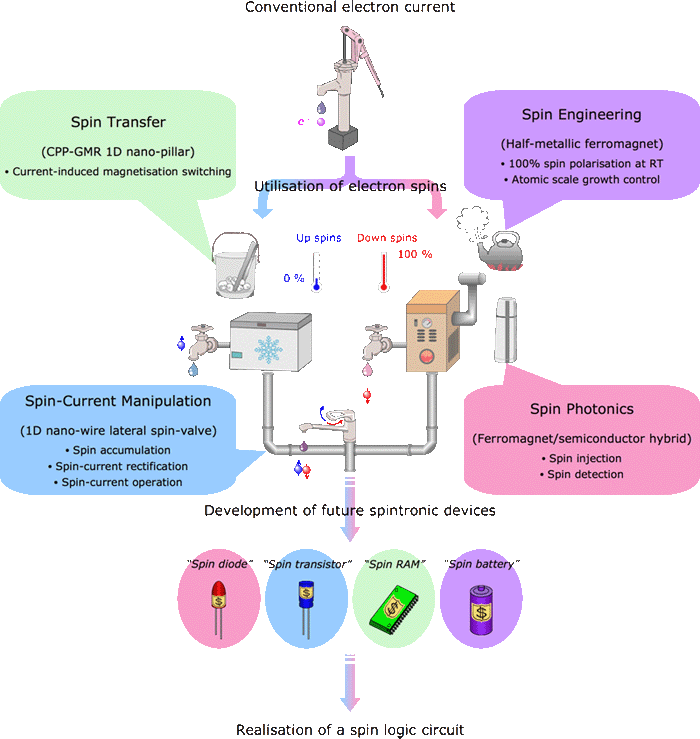Last updated: 26/12/2018
 Magneto-Optics
Magneto-Optics
 Spin Tansport
Spin Tansport
 Magnetoresistance
Magnetoresistance
 Magnetic materials
Magnetic materials
 Magnetic domains
Magnetic domains
 Basic magnetism
Basic magnetism
What Is Spintronics?
 Spintronics is similar to handling water in various forms. In early years, people have been used water from a well, which matches with a conventional electron current. Recently, we can either freeze or boil water, so that we can make use of either ice-cold or boiling-hot water. These two distinct forms of water are characterised by the temperature, 0 or 100oC, which corresponds to the electron-spin polarisation of 0 (up spins) or 100% (down spins) as shown in the figure.
Spintronics is similar to handling water in various forms. In early years, people have been used water from a well, which matches with a conventional electron current. Recently, we can either freeze or boil water, so that we can make use of either ice-cold or boiling-hot water. These two distinct forms of water are characterised by the temperature, 0 or 100oC, which corresponds to the electron-spin polarisation of 0 (up spins) or 100% (down spins) as shown in the figure.
Such temperature (or spin polarisation) differences can be introduced by boiling water for example (or atomically engineering spin configurations in a metal). Similarly, ferromagnets, such as Fe, Co and Ni, can induce a cetain degree of spin polarisation. Up to date, since there is no perfect spin source at room temperature, it is very important to create a new magnetic material, which has a 100% spin polarisation and can be utilised as a "spin battery."
The generated cold or hot water can be carried in the forms of ice or boiling vapor, and the temperature (spin polarisation) can be then transferred to other materials (spin transfer). The transferred spin polarisation can finally be taken out as an electrical voltage or light emission (spintronics or spin photonics). These phenomena enables us to produce a "spin memory" and a "spin diode."
Finally, both cold and hot water are mixed and the water temperature can be continuously tuned by a combined tap. Spin polarisation can be tuned in the same way in the near futue (spin manipulation), building a "spin transistor."